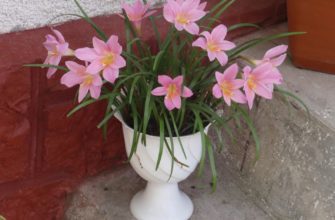Oxalis and Wood Sorrel, these two names refer to the same plant that is known for its attractiveness and unique appearance. Their elegant and colorful leaves are eye-catching and make them a popular choice as houseplants.
In this article, we will get acquainted with the features of oxalis and wood sorrel, consider their appearance and growing conditions in nature, and also tell you how to care for these plants at home.
You will learn about the different shapes and colors of leaves that these plants have that are very attractive. In addition, we will look at the places where you can find oxalis and wood sorrel in nature, which will allow us to better understand their origin and ecological preferences.
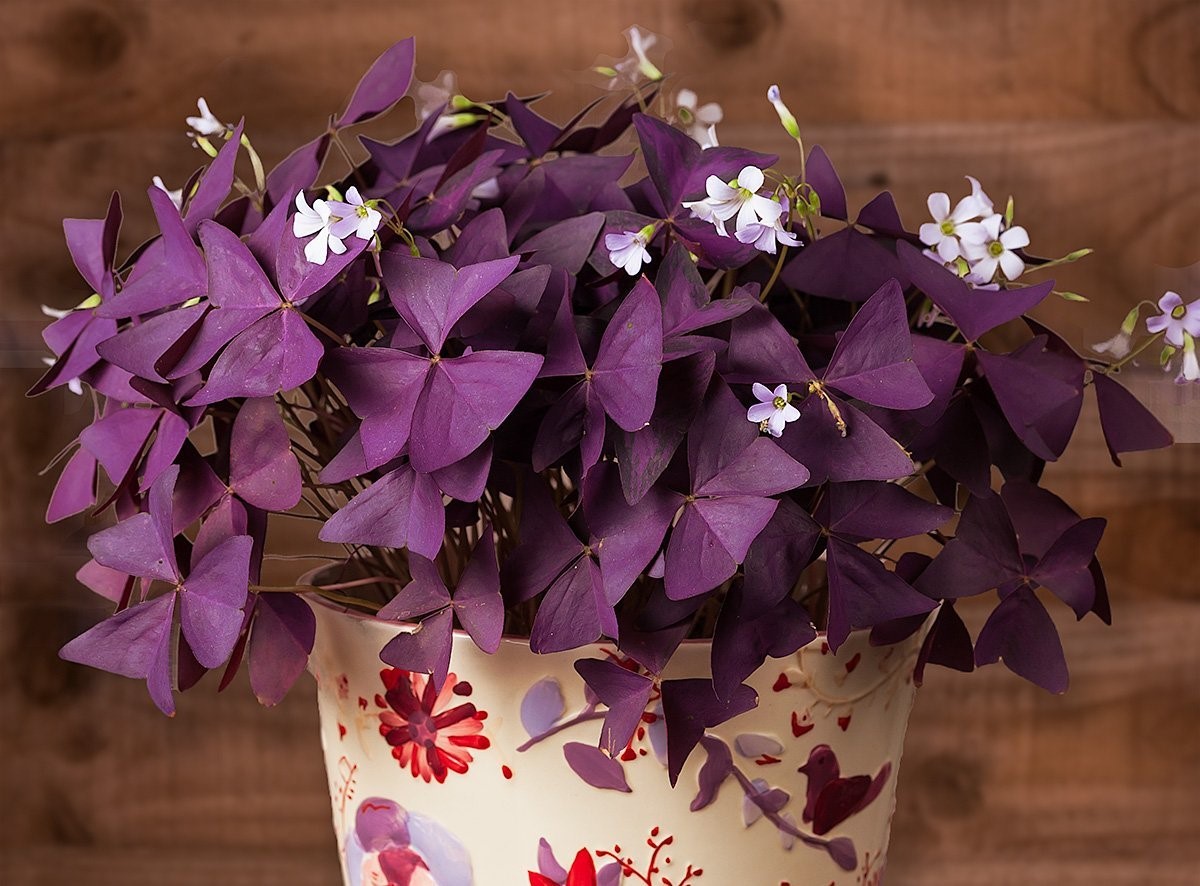
Appearance of Oxalis: shape, size and color of leaves
Wood sorrel (Oxalis) is a plant that is distinguished by its unique appearance, attracting the eye with its sophistication and color. Wood sorrel has several varieties, but the common features of their leaves have made them popular among plant lovers.
Here are some of the features of the appearance of wood sorrel:
- Leaf shape: Wood sorrel leaves are usually shaped like a heart or a trifoliate. They can be gently rounded or more pointed, depending on the variety of the plant. The shape of the wood sorrel leaves adds grace and elegance to this plant.
- Leaf size: The size of the wood sorrel leaves can vary depending on the variety. Some varieties have small and delicate leaves, about the size of a coin, while others have large and wide leaves, reaching several centimeters in diameter. Large leaves create a great visual effect and attract special attention.
- Leaf color: One of the most amazing features of wood sorrel is the variety of colors of its leaves. They can be bright green, purple, red, white or even black. Some varieties of wood sorrel have variegated leaves with different combinations of colors, creating a colorful and attractive image. The color of the leaves can be uniform or have interesting patterns and transitions from one shade to another.
The peculiarities of the appearance of wood sorrel make it a unique plant for lovers of exotic and unusual plants. These beautiful leaves become a bright accent in the interior and add attractiveness to any room.
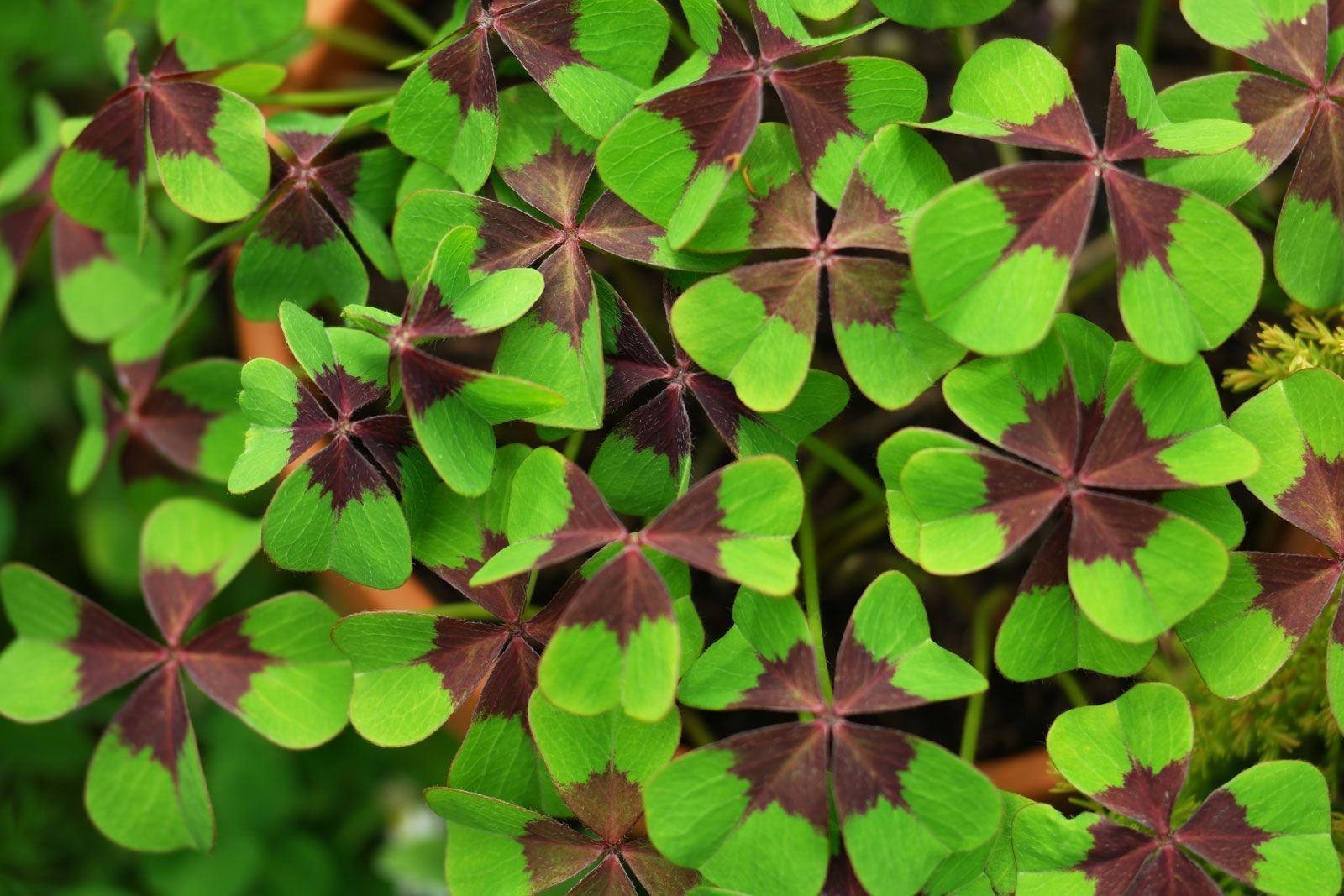
Caring for Oxalis at home
Caring for Oxalis at home is not difficult, but it does require some attention and care. Here are some key aspects to keep in mind when caring for Oxalis:
- Lighting: Wood sorrel requires bright but diffused light. Place the plant in a place where it will receive sufficient light, but avoid direct sunlight, which can cause burns on the leaves. An ideal location may be a window with an eastern or western exposure.
- Temperature: Wood sorrel prefers moderate temperatures. The optimal range is approximately 18-24°C. Avoid sudden temperature changes and, if possible, avoid permanently placing the plant near sources of cold or heat, such as air conditioners or heaters.
- Watering: Wood sorrel requires moderate soil moisture. Water the plant when the top layer of soil is slightly dry. Avoid overwatering, as this can lead to root rot. Use soft water at room temperature for watering to avoid deposits on the leaves.
- Humidity: Wood sorrel appreciates high humidity. To ensure optimal conditions, you can spray water around the plant or use a humidifier in its vicinity. This is especially important in dry rooms.

Reproduction and Oxalis
Oxalis is a plant that can be propagated in a variety of ways, allowing you to obtain new plants and expand your collection of diverse varieties. Here are some methods of propagating Oxalis and some interesting varieties that can be obtained.
- Cuttings: One of the most popular methods of propagating Oxalis is cuttings. To do this, choose healthy stems with mature leaves and cut them, leaving a length of about 7-10 centimeters. Then place the stems in moist soil or a glass of water and create favorable conditions for root growth. After the roots have formed, you can transplant the cuttings into separate pots.
- Dividing tubers: Some varieties of Oxalis produce tubers that can be divided into several pieces for propagation. When the tubers are large, they can be carefully divided into several pieces, ensuring that each piece has a sprout and roots. The tuber pieces can then be planted in separate pots and provided with growing conditions.
- Seed propagation: Another way to propagate Oxalis is through seeds. Oxalis seeds can be purchased or obtained from ripe capsules on the plant. Once the seeds have been collected, they can be planted in prepared soil or substrate for germination. The seeds usually germinate quickly, and the emerging shoots can be transplanted into individual pots.
So, the propagation of Oxalis presents various possibilities for obtaining new plants.
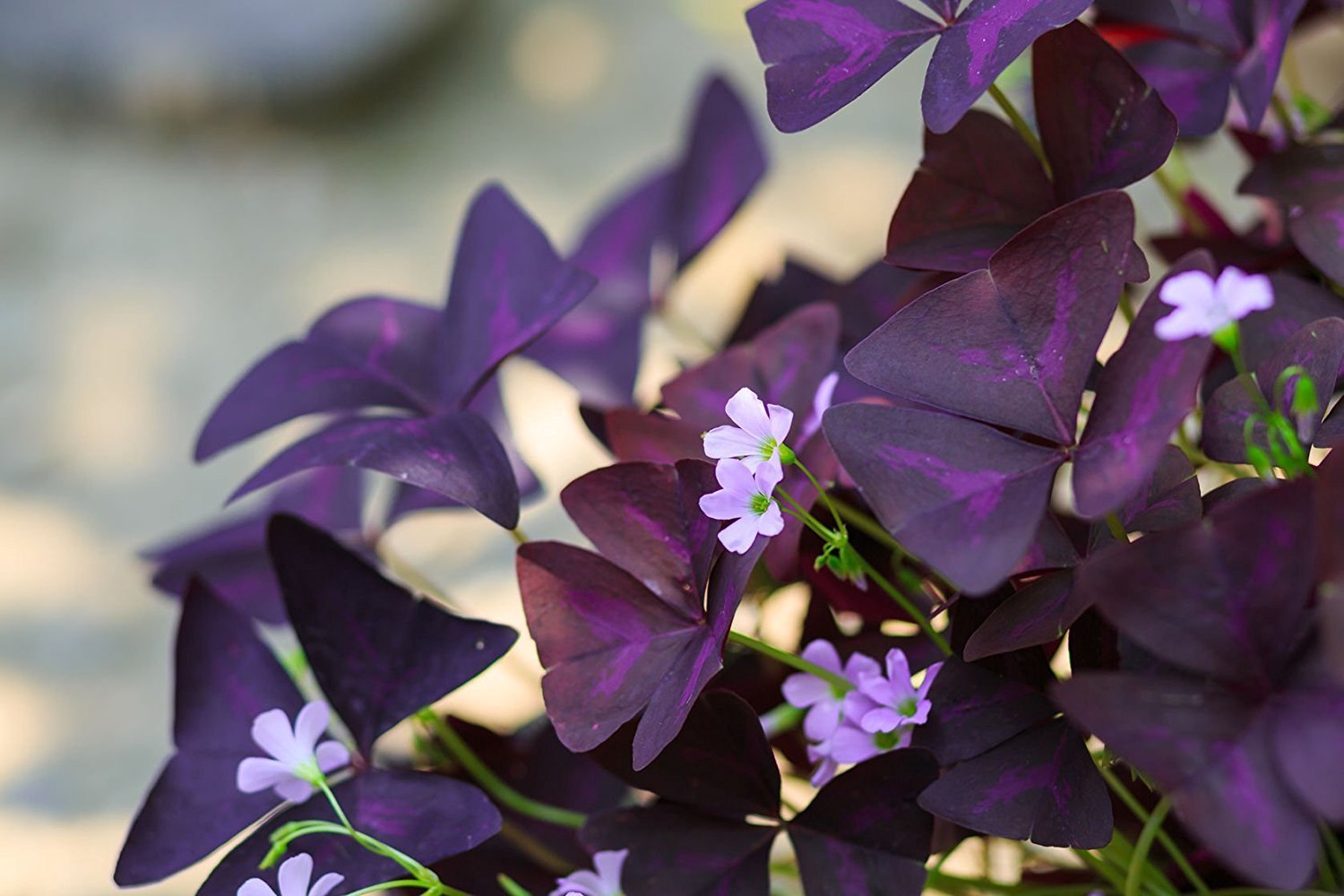
Oxalis varieties
In addition to the different propagation methods, there are also many interesting varieties of Oxalis that differ in the shape, size and color of the leaves. Here are some of them:
- Oxalis Triandra (Oxalis triangularis): This variety is characterized by triangular leaves that can be purple, burgundy or green. It is known for its spectacular beautiful leaves and atmospheric appearance.
- Oxalis Indices (Oxalis indica): This variety has light green leaves with white or pink speckles, creating unique patterns on the plant.
- Oxalis Ionota (Oxalis ionota): It is distinguished by its small, light green leaves with beautiful purple edges.
- Oxalis Yellow (Oxalis luteola): A variety with yellow leaves that attract attention with their bright and sunny color.
These are just a few of the many varieties of Oxalis that are available for propagation and cultivation. Each variety has its own characteristics and unique character, allowing you to create a varied and interesting collection of Oxalis at home.

Oxalis flower at home
Wood sorrel is an annual or perennial plant that is popular among those who love gardening or have their own cozy garden at home. Wood sorrel belongs to the buckwheat family and is known for its bright green leaves with beautiful edges and white, yellow or pink flowers.
It is one of the most useful plants, used in cooking, medicine and cosmetology. By choosing the wood sorrel flower for your home, you will be able to enjoy the beautiful green cover of leaves and delicate flowers.
It is very easy to care for. To grow it, you need to choose a place in the house with enough sunlight and water the plant when the soil dries. Wood sorrel can be used as a seasoning for dishes, added to salads or made into hot drinks.
In addition, wood sorrel buds and leaves are good antioxidants and rich in vitamin C. They are also used in the treatment of anemia and urolithiasis.
In the end, growing wood sorrel at home is a great way to decorate your home and get many health benefits. This flower will be a good choice for people who love greenery and strive for a healthy lifestyle.
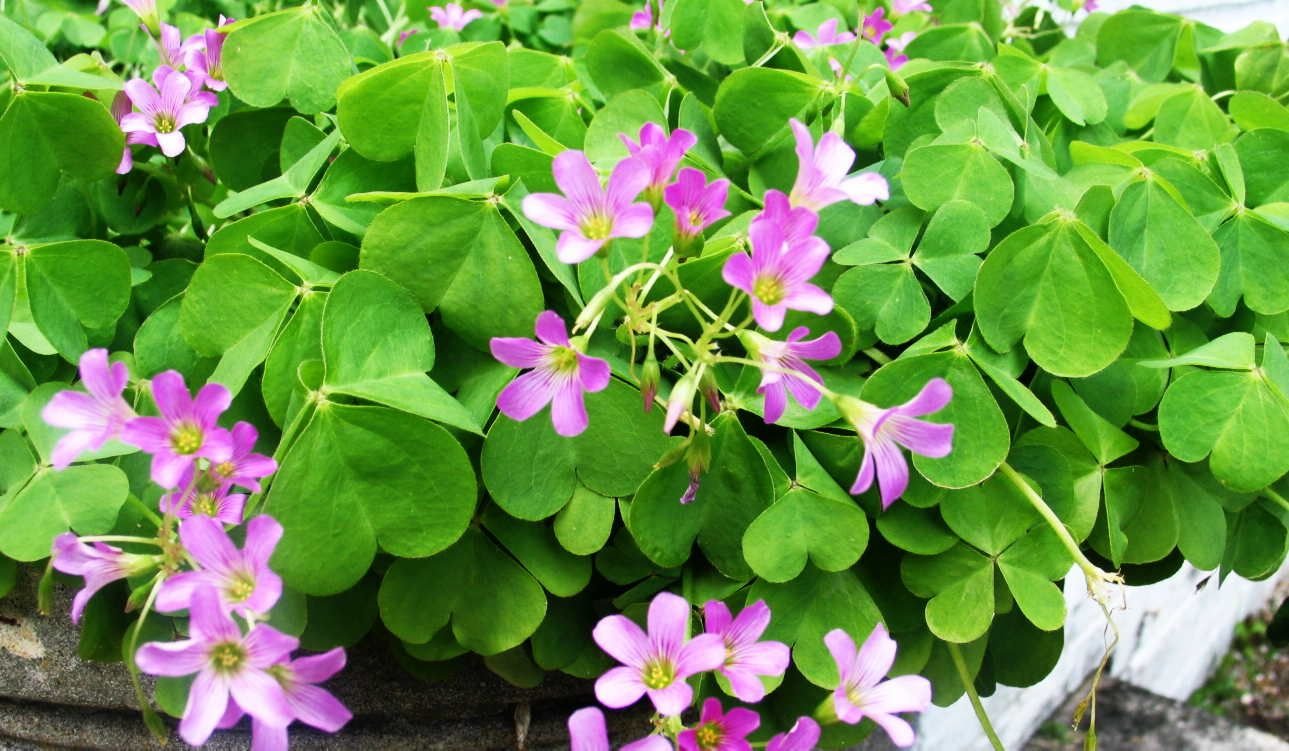
The importance and attractiveness of Oxalis
Wood Sorrel, also known as Oxalis, has its own special significance and appeal that makes it a popular choice for growing indoors. Here are some of the key aspects that make Wood Sorrel significant and appealing:
- Aesthetic appeal: One of the main advantages of the Wood Sorrel is its beautiful appearance. Wood Sorrel leaves can be bright and colorful, with different shades of green, purple, red and white. It can also have interesting patterns and transitions between different colors, making each specimen unique and attractive. Wood Sorrel becomes a bright accent in the interior, bringing a touch of life and natural beauty to the house.
- Variety of varieties: Wood Oxalis offers a variety of different cultivars, each with its own unique characteristics. You can choose from a variety of leaf shapes, color combinations, and plant sizes, allowing you to select the perfect Wood Oxalis to suit your preferences and interior style.
- Ease of growing: Wood sorrel is relatively easy to care for, making it accessible even to gardening novices. The plant generally requires moderate lighting and regular watering. Wood sorrel can also adapt to a variety of indoor conditions and copes well with adverse factors such as low humidity or temperature changes.
- Air purifier: Wood sorrel, like many other plants, is an effective air purifier. It is able to absorb some harmful substances, such as formaldehyde and benzene, that may be present in the air indoors. The plant releases oxygen and helps improve the air quality, creating a healthier atmosphere to live in.
- Positive impact on mood: Being around the Oxalis plant can have a positive effect on your emotional state and mood. Research shows that being in nature and surrounded by green plants can help reduce stress, improve your mood, and increase your overall well-being.
Wood sorrel is an attractive and meaningful plant that not only beautifies the home but also helps create a healthier and more pleasant atmosphere.
Its beautiful appearance, variety of varieties, ease of care and positive impact on our mood make Oxalis a popular choice among gardeners and indoor plant lovers.
Oxalis (sorrel) in the wild
Oxalis, or wood sorrel, is one of the most common and widespread plant crops in the wild. It is a perennial plant with flowers that are distinguished by bright and juicy leaves.
Oxcalis plants are common in Europe, Asia, North America and elsewhere. Most species prefer damp, shady places such as forests, swamps and watersides.
Oxalis (sorrel) in the wild has not only decorative value, but is also very popular in folk medicine. The leaves and stems of the plant are rich sources of vitamin C, calcium and other minerals that are necessary for human health.
Some types of wood sorrel also contain oxalate, which helps mineralize bones, as well as antioxidants, which protect the body from oxidative stress and other potential diseases.
In addition, many species of wood sorrel are used in cooking. The leaves of this plant are used as aromatic seasonings for salads, sauces, soups and potato dishes.
They can also be used to make fresh juices or hot teas. Overall, wood sorrel in the wild is a very useful and popular plant that can be used for both medicinal and culinary purposes.
Many people who love nature actively study this useful plant species, practicing its cultivation in their gardens or harmoniously integrating it into the wild nature.






